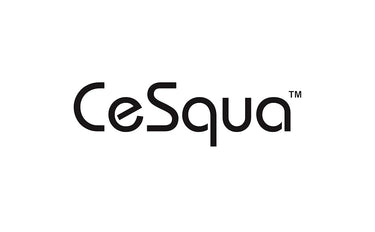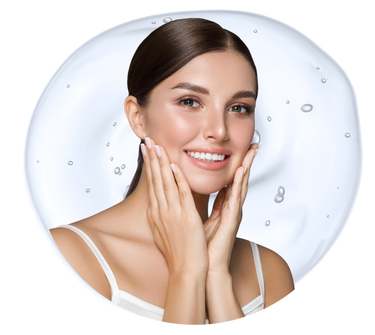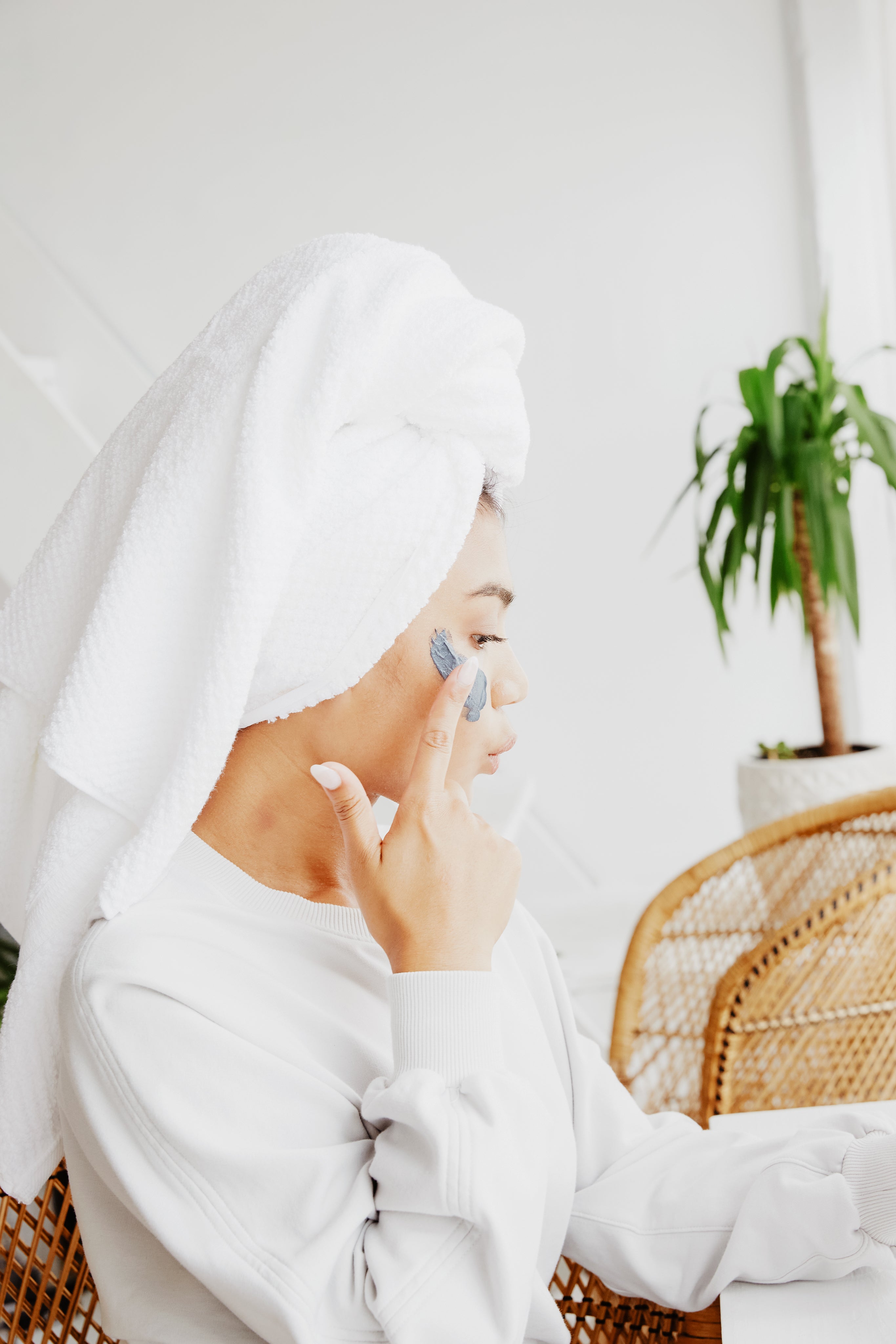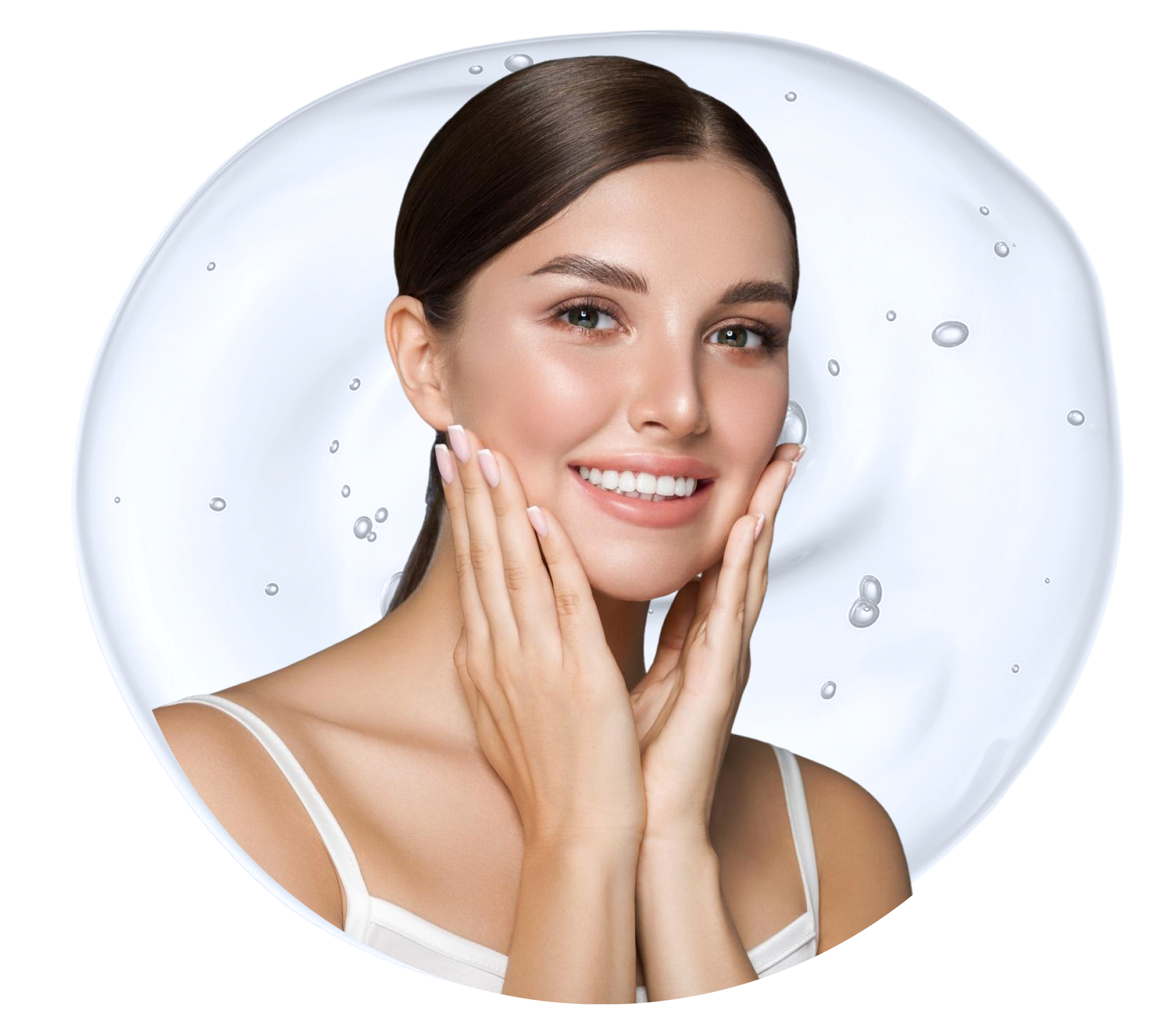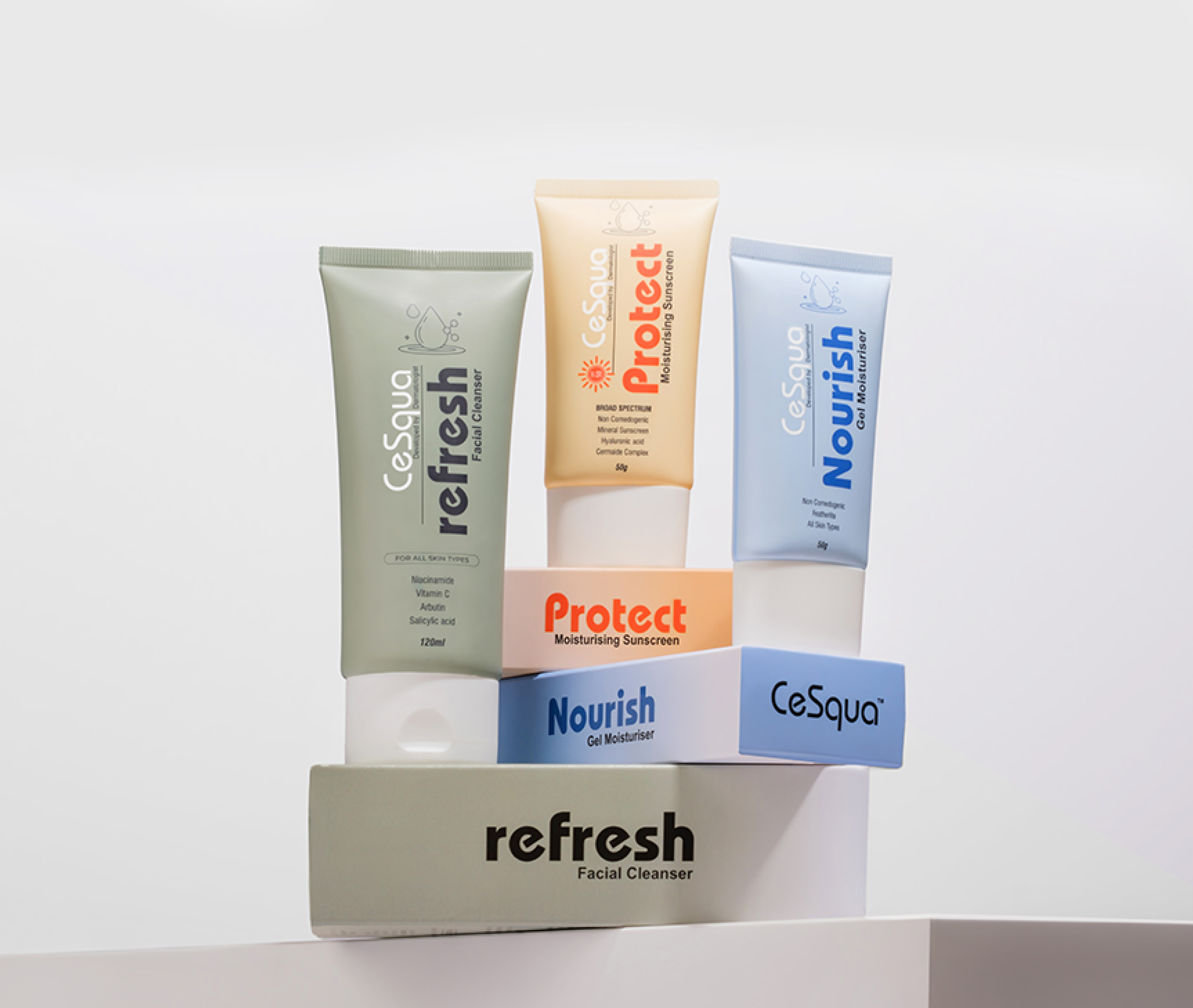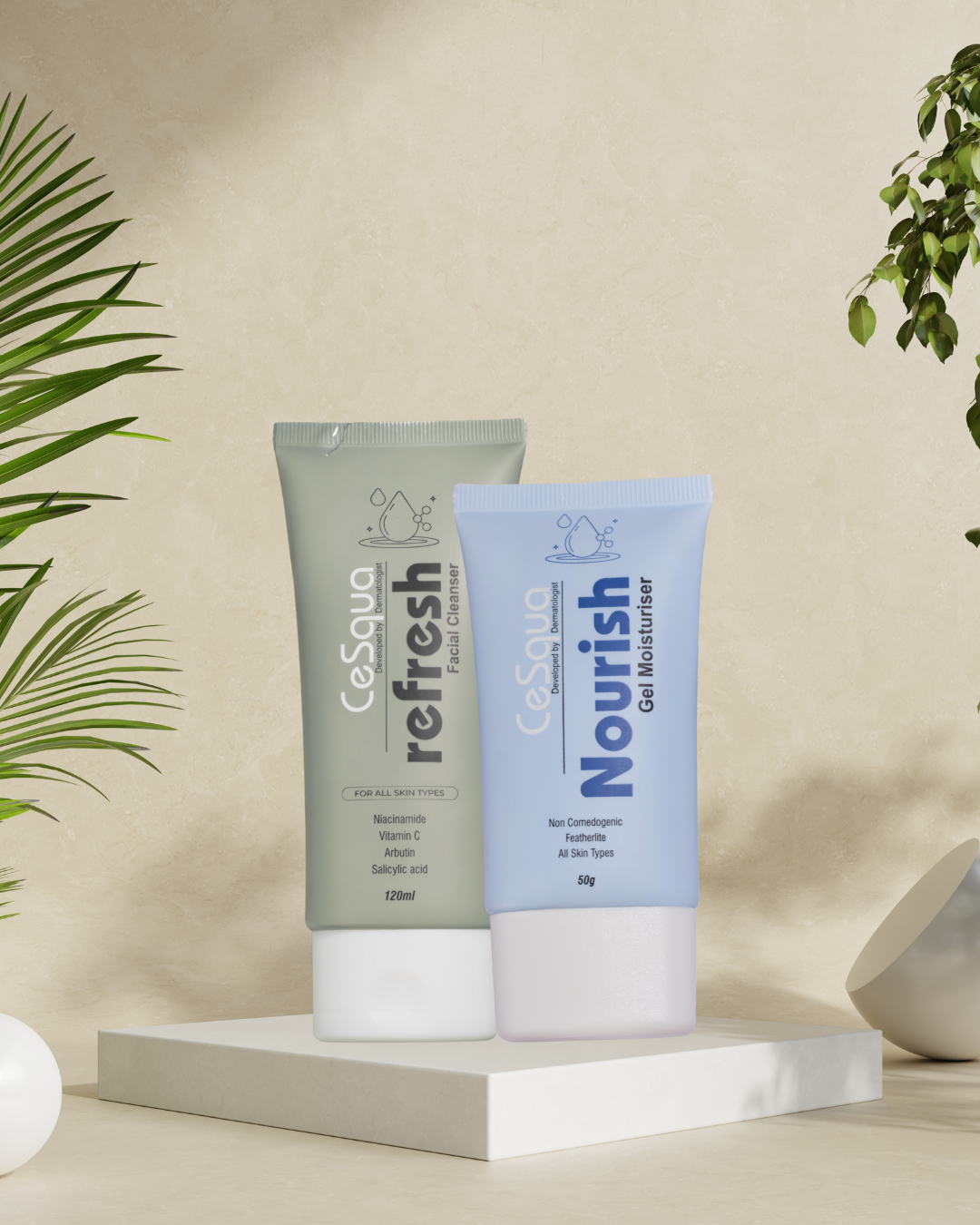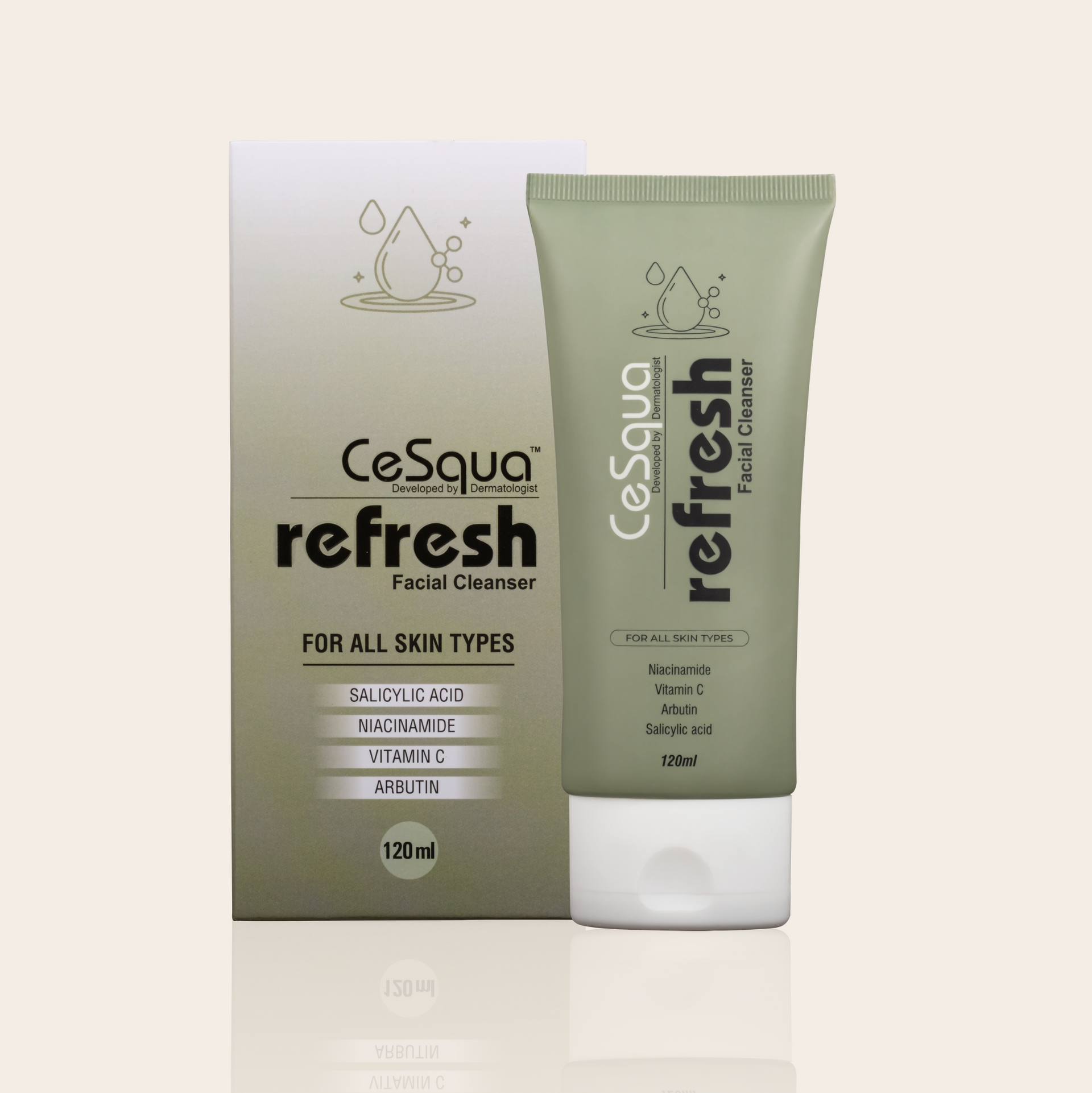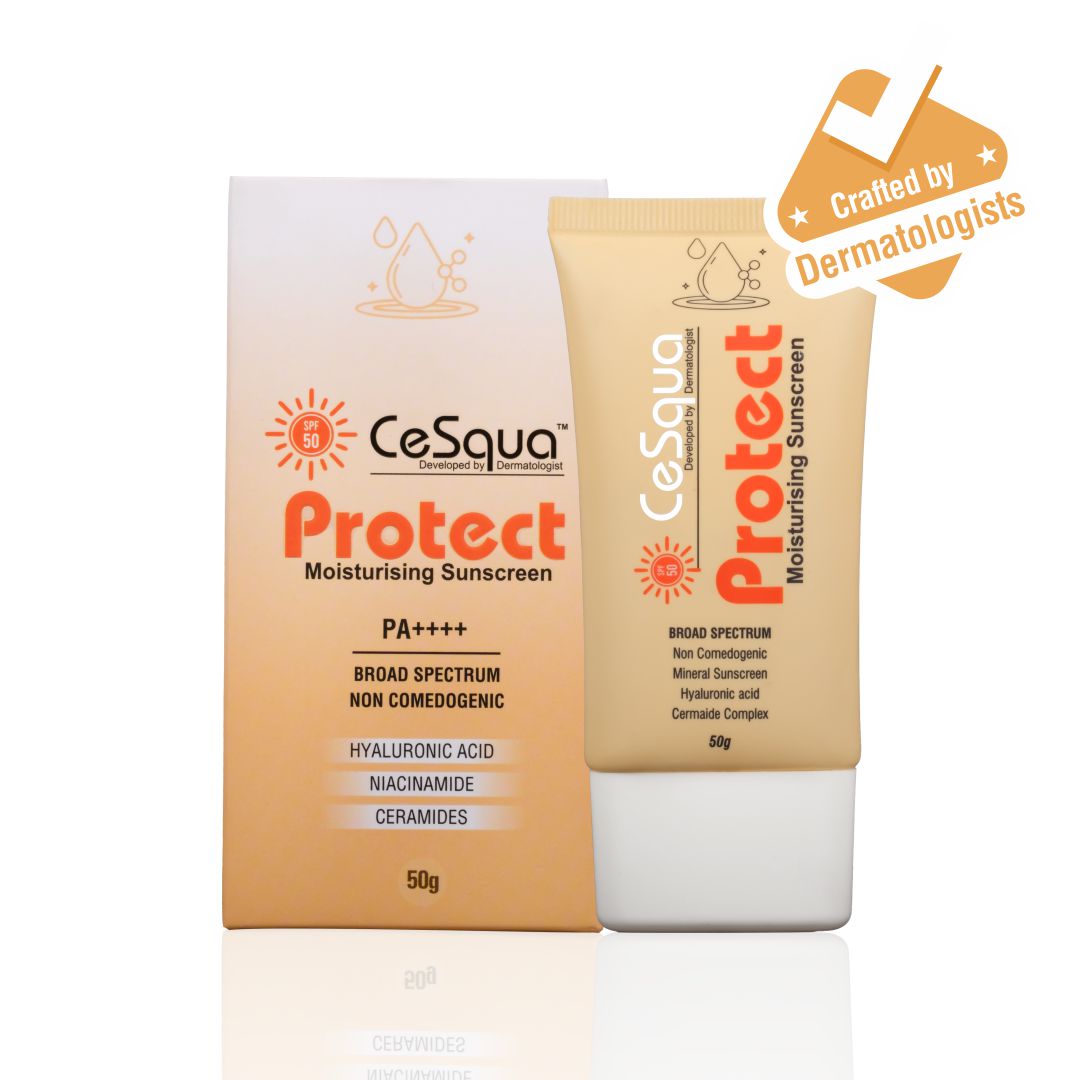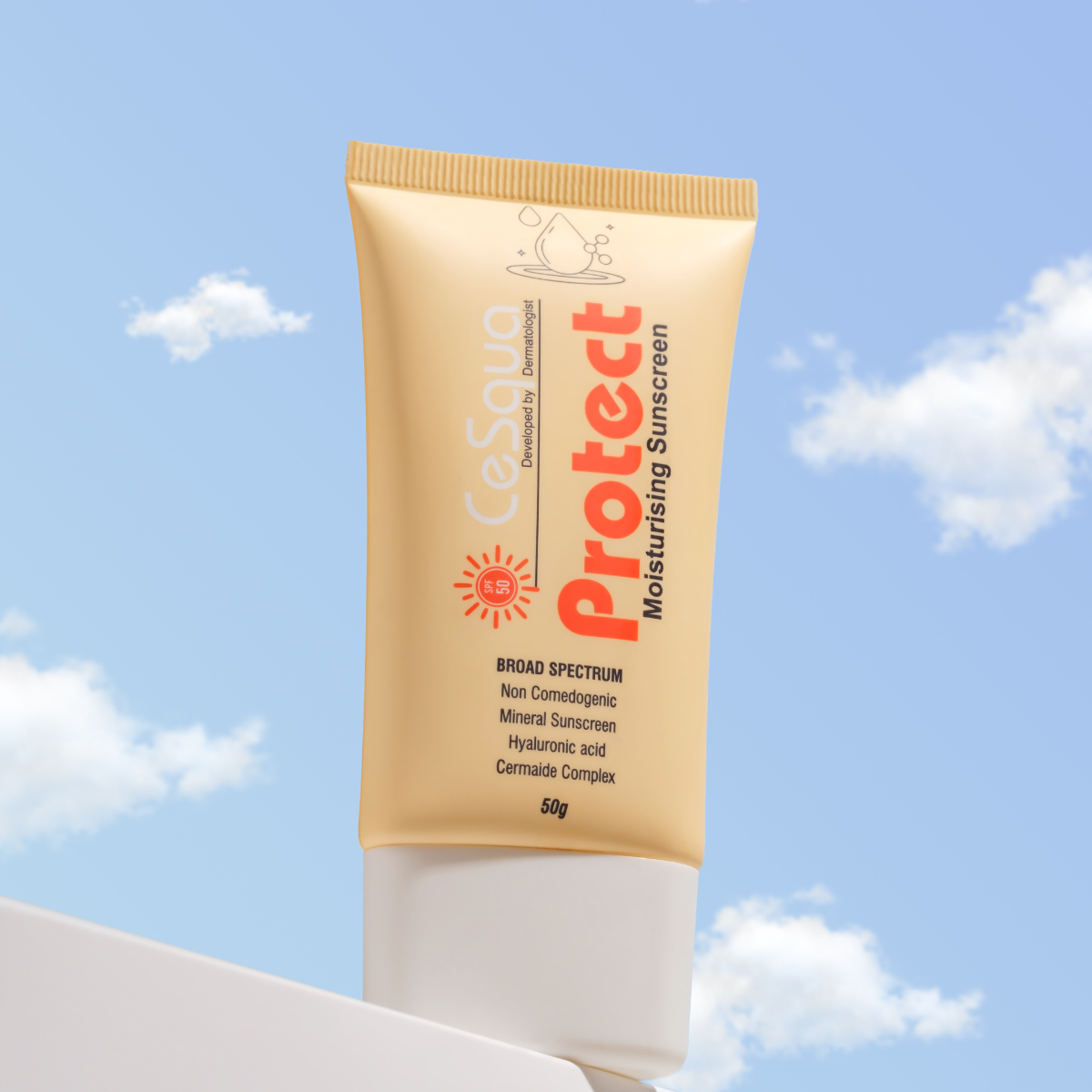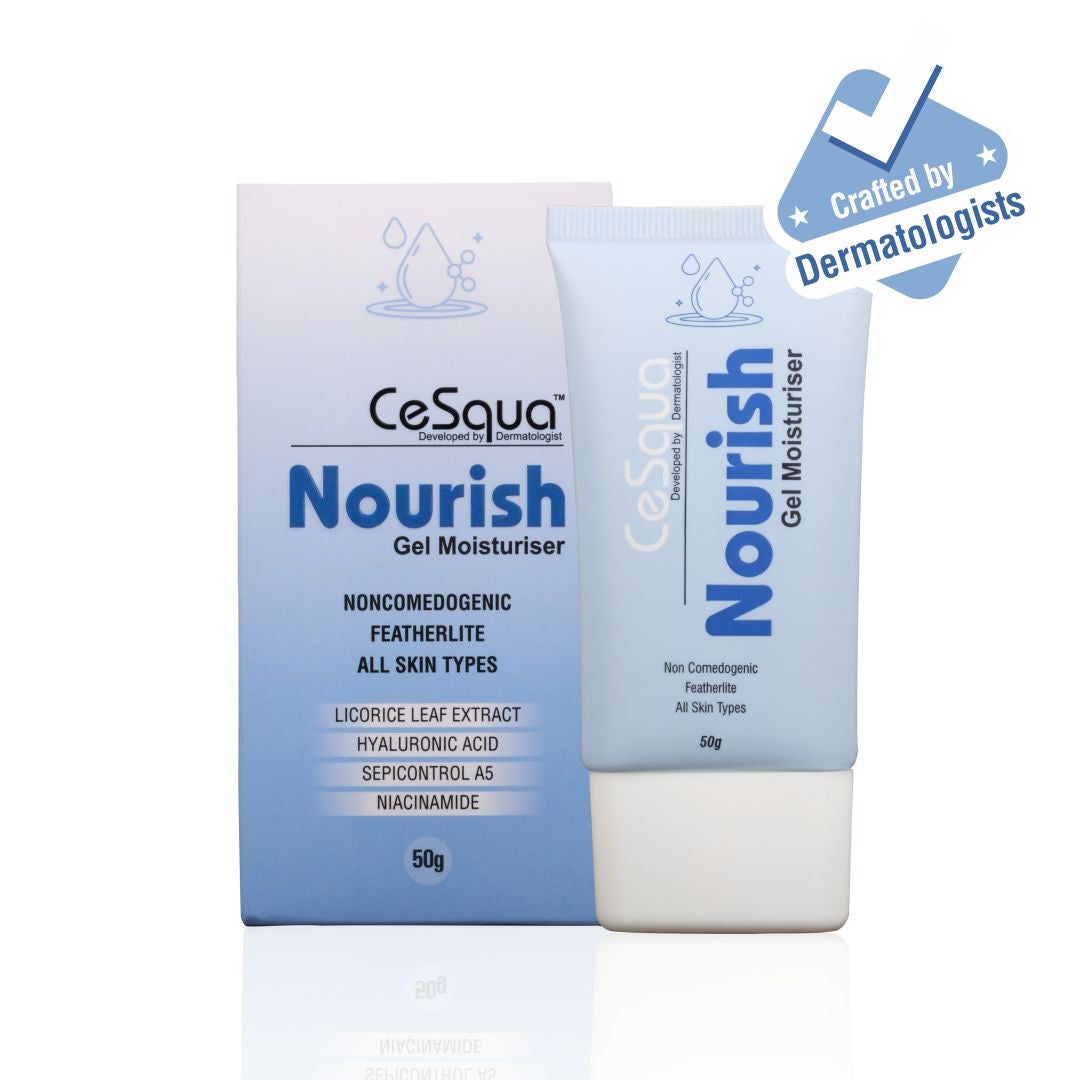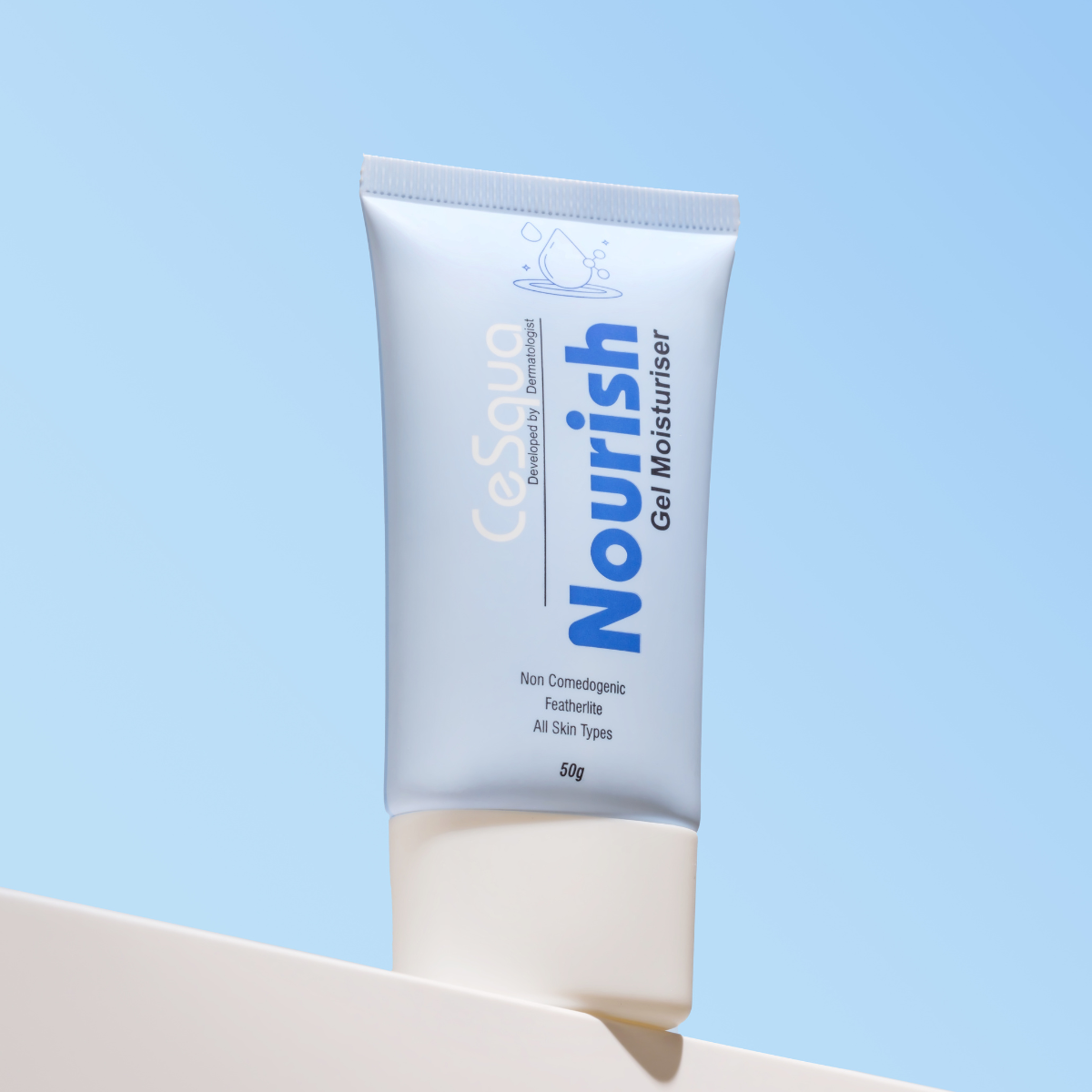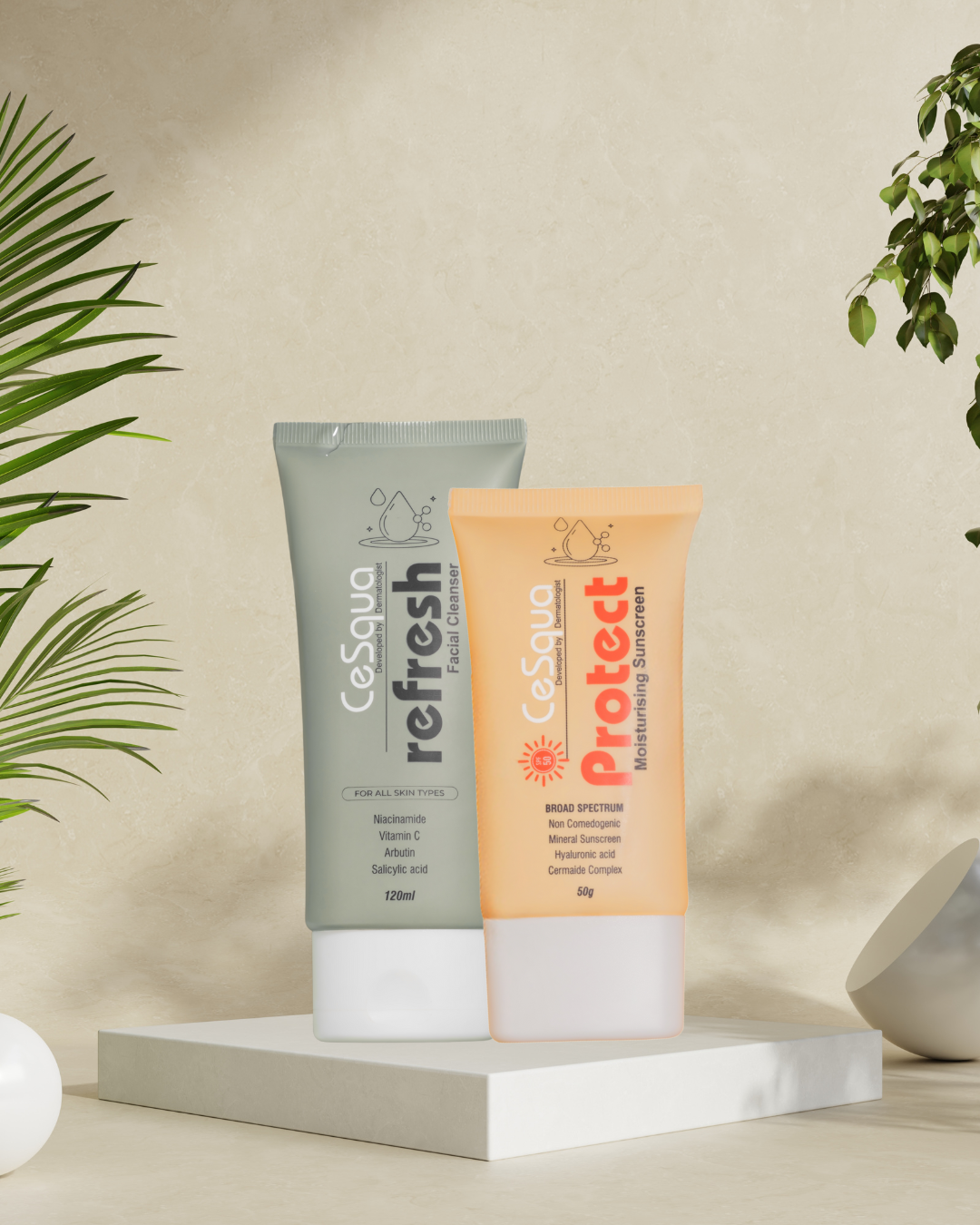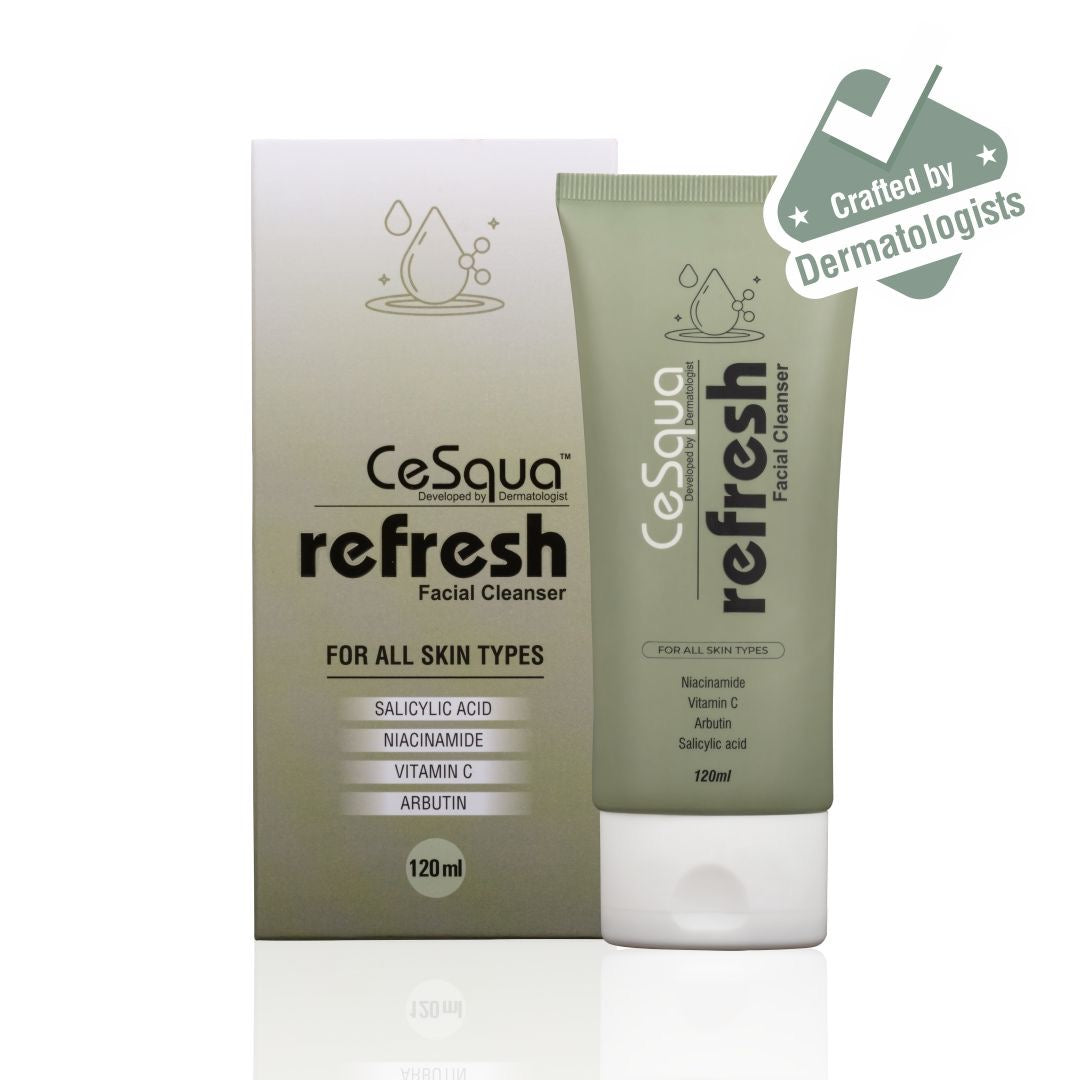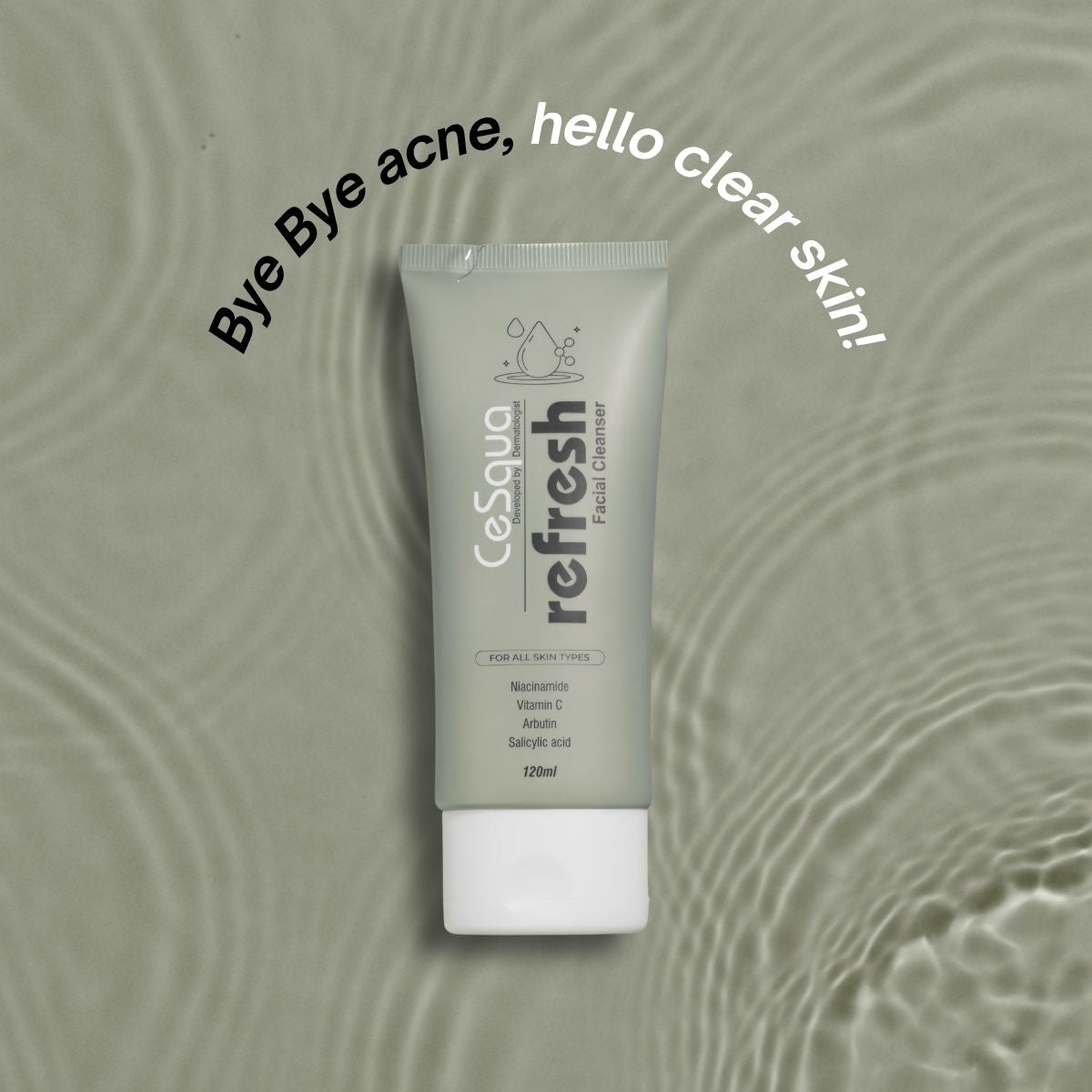There's a revolution quietly taking hold in Indian skincare. With ingredient lists under scrutiny and sustainability rising in importance, terms like "clean beauty" and "sustainable skincare" are everywhere. But what do they really mean? At CeSqua, as a dermatologist-founded company, we've navigated the confusion and want to share what truly matters when you're selecting products for safety, transparency, and a lighter environmental impact. Let's demystify 'clean beauty'—contextualized for India and grounded in dermatological science.
What Is ‘Clean Beauty’ – And What Isn’t?
In India, as worldwide, 'clean beauty' isn't a tightly regulated or standardized term, but it reflects a powerful intent. Clean beauty is about prioritizing the health of your skin and the planet. Unlike “natural” or “organic” labels—which can mean very different things depending on context—clean beauty means products are formulated without known harsh or harmful chemicals and with attention to ingredient transparency, thoughtful sourcing, and reduced environmental impact. It's about clarity over marketing jargon, using ingredients that are proven to be safe, and leaving out those shown to pose health or environmental risks.
But remember: Clean doesn’t mean chemical-free (water is a chemical!), nor does it mean basic natural extracts. It's about careful formulation, safety, and a no-compromise approach to what truly touches your skin.
Why Does Clean Beauty Matter in India?
With India rapidly emerging as a major market for beauty, traditional expectations are changing. Our tropical climate, high UV index, pollution, and unique skin health patterns make ingredient safety and efficacy critical. Health-conscious consumers are now asking:
- Does this product avoid known skin irritants and hormonal disruptors?
- Is it cruelty-free, and does it use eco-friendly, minimal packaging?
- Does it actually deliver results without overwhelming my routine?
We've seen Indian shoppers scrutinizing ingredient lists, preferring vegan and cruelty-free options, and questioning greenwashing—the practice of making misleading clean or “safe” claims without proper backing. This change is reflected in global and local regulations: globally, over a thousand ingredients are banned in personal care (like in the European Union), but Indian rules are still catching up. So, brands and consumers alike must be proactive.
How to Identify Truly Clean, Safe, and Sustainable Skincare in India: Our Step-by-Step Guide
1. Know the Ingredients to Avoid
Start with label literacy. Clean beauty means formulas free from:
- Parabens (methylparaben, propylparaben, etc.): Preservatives linked in some research to hormone disruption.
- Phthalates: Often hidden under “fragrance”; can disrupt hormone function.
- Sulfates (SLS/SLES): Harsh cleansers that strip away natural oils, often irritating sensitive skin.
- Synthetic fragrances & colors: Frequent causes of allergies and unexplained skin irritation.
- Formaldehyde releasers: Preservatives with known sensitizing, even carcinogenic, potential.
For a deeper understanding of ingredient sensitivity and how to spot irritants, you can read our dedicated piece: Sensitive Skin Essentials: How to Choose Products That Soothe, Hydrate, and Protect.
2. Look for Science-Backed, Transparent Formulations
In India, there's no compulsory "clean" certification yet, but brands genuinely invested in your skin's health will:
- List every ingredient on packaging and online, never hiding behind “proprietary blend.”
- Use recognizable, evidence-backed actives like niacinamide, hyaluronic acid, ceramides, zinc PCA, and chamomile extract—each with proven skin benefits and safety records.
- Clearly communicate what’s not inside: No parabens, sulphates, or harmful preservatives.
At CeSqua, this is non-negotiable. Our mission to make skincare effortless and trustworthy means we fully disclose ingredients—details here—and combine pharma-grade efficacy with everyday safety.
3. Understand the Power of Minimalism
Most skin doesn’t need long, complicated routines. In fact, the cleanest, most effective approaches strip away the excess (both literal and metaphorical) for fewer steps and measurable results:
- Cleanse: Remove impurities gently. A face wash like CeSqua's Refresh Facial Cleanser combines cleansing power with calming agents for all skin types—without harsh detergents.
- Hydrate: Apply lightweight, non-greasy hydration. Our Nourish Gel Moisturiser blends humectants and botanicals to soothe without pore-clogging heaviness.
- Protect: Use sunscreen daily—our Protect Moisturising Sunscreen is designed to defend skin from UV and environmental stress, with no white cast or stinging.
For those looking to streamline, consider curated sets like our skincare combos—they’re formulated so each step complements the next, keeping your skin barrier strong and routines uncomplicated.
For more reasons and guidance on minimalist routines, visit: The Minimalist Skincare Routine: Three Steps to Clear, Healthy Skin.
4. Evaluate Sustainability and Packaging
Clean beauty stretches beyond label claims. Ask:
- Is the packaging recyclable or biodegradable?
- Are ingredients ethically sourced and traceable?
- Does the brand minimize unnecessary secondary packaging?
At CeSqua, our products come in recyclable packaging, and we eliminate unnecessary steps and waste wherever possible. All formulas are vegan and cruelty-free. Simple routines also mean less consumption and less environmental burden overall.
5. Beware of Greenwashing
Not every brand claiming 'clean' or 'safe' delivers. Watch for:
- No ingredient transparency.
- Vague claims like “chemical-free” (impossible since all matter is chemical) or “natural” as a synonym for safe.
- Long lists of botanicals with no proven benefit, but lacking safety data.
Always check the label and website for clear information, and know that true clean beauty is about scientific scrutiny—not just marketing promises.
Real Ingredients, Real Results: What’s Inside Clean Indian Skincare
At CeSqua, we focus on ingredients recognized both for efficacy and safety. Here’s what you’ll often find in our formulations:
- Niacinamide: Brightens, calms irritation, strengthens skin barrier.
- Hyaluronic Acid: Deep, lightweight hydration for all skin types.
- Zinc PCA & Tea Tree Oil: Control oil and support acne-prone skin.
- Ceramides & Panthenol: Lock in moisture and support the natural skin barrier.
- Chamomile & Licorice Extracts: Help to soothe, reduce redness, and brighten skin tone.
- Physical Sunscreens: Titanium dioxide and zinc oxide for broad-spectrum UV defense, ideal for Indian summers and sensitive skin.
- BlueShield: Shields against blue light and pollution—crucial with our rising screen time.
You can compare these to global standards, but we always choose what's right for Indian skin and climate.
For a breakdown of how ingredients like ceramides and hyaluronic acid work for barrier repair, see our in-depth blog: Ceramides vs. Hyaluronic Acid: Which Is Better for Hydrated, Resilient Skin?.
Clean Skincare in Practice: A Simple Routine with Indian Realities in Mind
An effective, safe, and sustainable skincare routine doesn’t have to be elaborate:
- Start with a gentle cleanser that removes dirt, oil, and pollution without stripping sensitive skin. Look for a simple formula with calming agents. The Refresh Facial Cleanser blends salicylic acid, niacinamide, and panthenol—a powerful trifecta for cleansing without depleting moisture.
- Add lightweight, non-comedogenic hydration like a gel moisturizer formulated to calm and protect. Especially if you struggle with humid weather or combination skin, choose hydrating agents like hyaluronic acid and soothing botanicals. Discover our Nourish Gel Moisturiser for this purpose.
- Finish with broad-spectrum, skin-kind sunscreen formulated without harsh chemicals or pore-clogging ingredients. Modern physical filters safeguard against not only UV, but also pollution and blue light. CeSqua’s Protect Moisturising Sunscreen fits this bill—fragrance-free and suitable for all skin tones.
If you want to learn more about proper sunscreen application and the infamous "two-finger rule," check our guide: Understanding the Two-Finger Sunscreen Rule.
Building Your Routine: Five Action Steps for Indian Consumers
- Audit your shelf: Pull out your current skincare and check for parabens, sulfates, phthalates, artificial color, or ambiguous "fragrance" ingredients.
- Simplify your steps: A core trio (cleanser, moisturizer, sunscreen) suits most skin in our climate, and means less environmental waste.
- Pursue transparency: Trust brands that clearly communicate ingredients on boxes and online, and explain why each component is included.
- Prioritize eco-friendly packaging: Opt for recyclable materials and avoid unnecessary outer boxes or plastic wrappings when possible.
- Stay informed & curious: Regulations and ingredient research evolve. Follow credible dermatology sources and support Indian brands championing real clean beauty.
CeSqua’s Promise: Clean, Effective, Dermatologist-Driven
Our founding principle is effortless routine and radiant results. By consciously choosing to leave out unnecessary or risky chemicals, sharing every ingredient, sourcing responsibly, and designing minimalist routines, CeSqua wants to build real trust. For us, clean beauty is the bridge between pharmaceutical safety and real-world skincare—no smoke or mirrors.
Want a deeper dive into why our approach focuses on fewer, multifunctional steps? You can read more in: Multifunctional Skincare: How to Simplify Your Routine Without Sacrificing Results.
Conclusion
Clean beauty in India isn’t a passing fad—it’s a movement for safer, more transparent, and truly effective skincare. It’s about putting your health and the planet first, navigating ingredient lists with confidence, demanding honesty, and gently minimizing footprint, one bottle at a time.
At CeSqua, we’re privileged to be a part of this necessary shift. For dermatologist-crafted, genuinely clean, and easy-to-understand skincare, visit cesqua.in and experience how less really can be more for both your skin and the planet.
